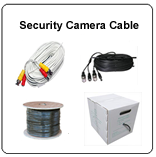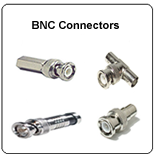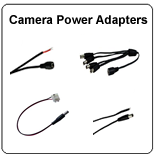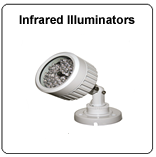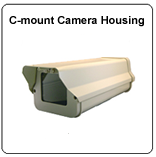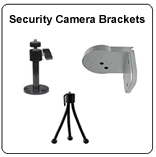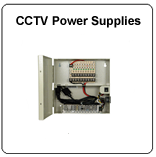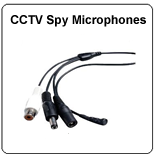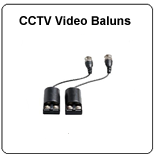Active Products List
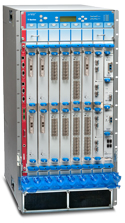
Routers
Today’s connected world makes big demands on telecom infrastructure. Rapid growth in new age applications, social networks, and video applications is leading to an explosion in bandwidth. Telecom operators require solutions with unprecedented flexibility and scale, as they converge multiple networks into a one robust, intelligent infrastructure. A true multiservice core requires a reliable, high-performance, and flexible backbone architecture that can carry a wide breadth of revenue-generating services. This enables operators to deliver stringent service-level agreements (SLAs) while minimizing both capital and operational expenditures.
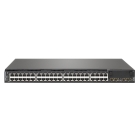
Network Switches
Highlights
1.44 x 1 GbE RJ45 ports, four 1 GbE SFP ports and up to four optional 10 GbE SFP+ or CX4 ports.
2.Low 120 W power draw and variable speed fans help reduce power consumption. DC power model is also available.
3.Network virtualization, it automatically detects virtual machine movement from one physical server to another
4.Stacking―A single switch image and configuration file can be used for up to six switches, sharing only one IP address and one management interface.
5.Availability―Built-in redundant fans, redundant power supplies, and HA software features.
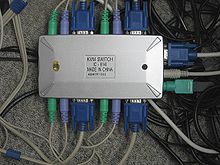
KVM Switches
KVM switches are useful where there are multiple computers, but no need for a dedicated keyboard, monitor and mouse for each one. They are frequently used in data centers where multiple servers are placed in a single rack with a single keyboard, monitor and mouse. A KVM switch then allows data center personnel to connect to any server in the rack. A common example of home use is to enable the use of the full-size keyboard, mouse and monitor of the home PC with a portable device such as a laptop, tablet PC or PDA, or a computer using a different operating system.
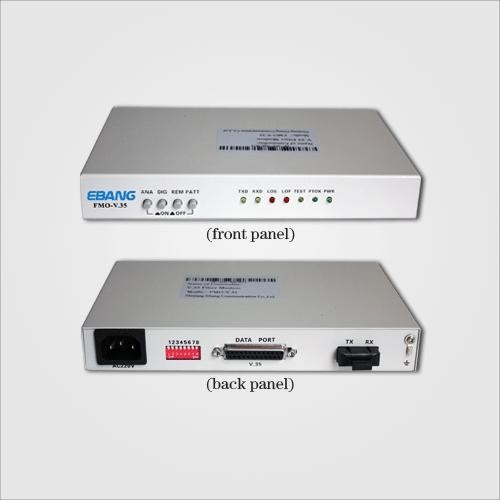
Modems: Framed/ Unframed-HDSL /MDSL /G.SHDSL
Features
(1) Having two row of LEDs, upper row indicate local status, lower row indicate remote status and alarm status.
(2) Based on self –opyright IC, high software content (kernel chip based on software).
(3) Realize take out specified time-slots to compose N*64k(N=1—32) data channel.
(4) Provide 3 loop functions: local loop(ANA), to remote loop(DIG), order remote loop(REM).
(5) Have pseudo random code test function, easy the installation and maintenance. (6) Realize rate setting of remote equipment (in slave clock status) when local equipment is in master clock status.
(7)V.35 fiber modem can be used with E1 fiber modem by pair, saved 1 G.703/V.35 converter.
(8)V.35 interface rate N*64k (N=1—32)(framed), and can end-link with other DCE equipments. (9)Network manager interface use SNMP .
(10)Two types:Standalone, desktop, 19inch;Card,usually be inserted in our rack 19 inch.
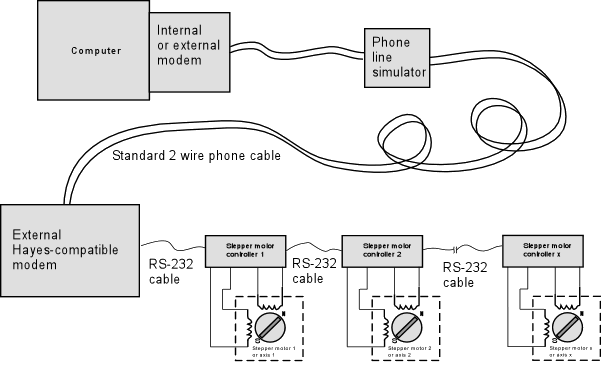
Interface Modems
The stepper controller has a universal modem friendly user programmable interface. To use it, you need a Phone line simulator and an external Hayes-compatible modem, hooked to one of controler serial port (Input). If necessary, standard adapters DB9-DB9, DB9-DB25 can be used. When power is switched on, the controller detects the modem and runs a sequence of user preprogrammed instructions, which initiate the modem. The modem initiates communication with a remote computer and gives control to it. Set of simple commands preprograms modem interface instructions, tests and traces them. The instructions are saved into nonvolatile flash memory and become default. This will cause the controller to automatically use the saved instructions if modem is detected after the controller reset or reboot (controller also reboots if modem communication is disconnected). If the modem is not detected, the controller initiates standard RS232 communication.
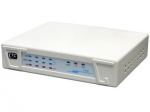
LAN Extenders
EFM is an Ethernet Network Extender designed to provide bonded high-speed Ethernet First Mile services over SHDSL on existing copper infrastructure. It is a bridge mode modem that delivers Ethernet services with symmetrical bandwidth at rates up to 22.8 Mbps (4 Pairs, Standard mode with TC-PAM 32) and 61 Mbps (4Pairs, Enhanced mode with TC-PAM 128). Implemented on IEEE 802.3ah EFM standards for advanced performance and management features.
Interface Converters
Interface Converters allow connection and interoperability of equipment having dissimilar combinations of standard communication interfaces. Interface converters allow for differences in both physical connectors and signal levels.
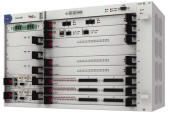
TDM Over IP
TDMoIP is mainly used to transmit voice signal over IP network. It has 1-4 E1 interface, 2 local Ethernet port and 1 uplink Ethernet port. TDMoIP-4 can connect TDM device and user’s Ethernet seamlessly and reliably on the standard low cost wireless or lineate Ethernet/IP configuration, without affecting the voice quantity. Being transparent to the TDM signal, this model assures connecting to physical E1 interface of any device seamlessly, such as PBX, mobile base station, SS7 signaling device and voice mail system. It can be used in the communication system based on E1, such as LAN, WAN, MAN and wireless network.
Passive Products List
Digital Co-Ax Cables
Digital coaxial cables are a type of cable specifically designed for carrying a digital, electronic signal. They can theoretically be used for any type of information, but most consumers will use them for audio/video connections, particularly for surround sound systems.
Accessories
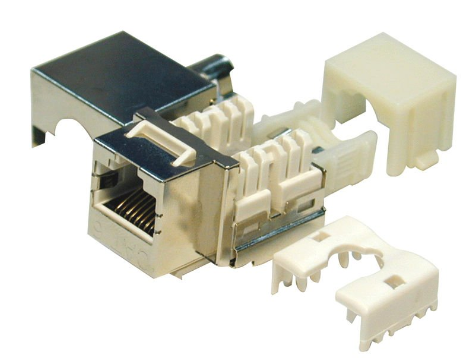
Information Outlet ( Cat.6 e Keystone Jacks )
The CAT6 shielded RJ45 Keystone Jack is a snap-in module with tabs. They are used for mounting low-voltage electrical jacks or optical connectors into a keystone wall plate, face plate, surface mount box, or a patch panel with a CAT6 shielded computer networking cable, however all keystones are interchangeable and replaceable. Designed for superior performance, this metal CAT6 RJ45 metal keystone jack is a two piece with a metal cover. Installations and maintenance is made easy with 110-type terminals on Category6 Enhanced Keystone Jacks for a T568A B wiring system.
Specifications :
- Meets or exceeds industry standard Category 6/Class E according to TIA/EIA 568B 2.1 and ISO/IEC 11801 2nd edition
- 110/KRONE IDC vertical punchdown termination for 22-26 AWG UTP solid wire
- Balances signal transmission of insertion loss and crosstalk from 1 to 250 MHz
- Complies with FCC Part 68
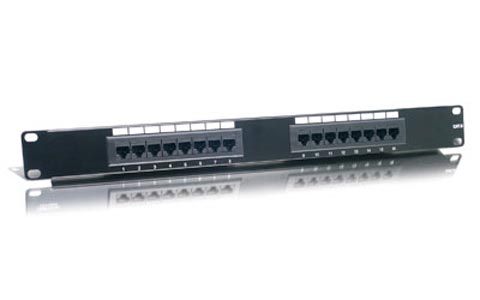
Patch panel ( Patch Panel/ Cat6/16 Port UTP)
Prepare yourself for Copper Gigabit Ethernet with Cat. 6 RJ-45 UTP Patch Panels. These patch panels are certified for 250Mhz Category 6, which are perfect for Copper Gigabit Ethernet connections.16-port Cat. 6 Patch Panels are ideal for Ethernet, Fast Ethernet and Copper Gigabit Ethernet (1000Base-T) network applications. Using Si's Cat. 6 products now, will prepare you for the high bandwidth network in the future without re-cabling your network.
Specifications :
- Ideal for a small installation where up to 16 ports are needed
- Dimensions Standard 19" rackmount
- Wire termination Industry standard IDC - colour coded to 568B
- RJ45 sockets 8 position, 8 contact socket
- Gold plated contacts
- Accessories Supplied with cable tie(s), 4 cagenuts and fixing bolts
- plus earthing kit
- RJ45 sockets 8 position, 8 contact socket
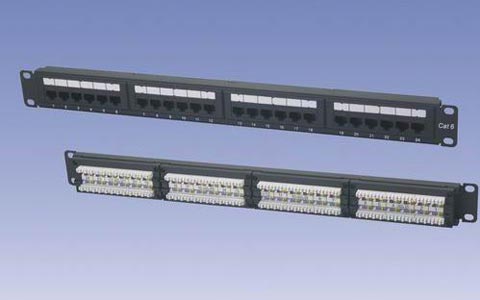
Patch panel ( Patch Panel/ Cat6 /24 Port UTP)
Features :
- Unloaded
- With cable management bar for improved management
- 16 & 24-port panel in 1U, 48-port panel in 2U
- 3P Certified Kj18 (F)* Cat 6 Unshielded Connecting Hardware
- Fully Loaded
- Six-port RJ45 modules applied
- ID stripes for identifying port allocations
- IDC compatible with 110 & Krone tool
- Terminating 4 pairs, 22-26 AWG, unshielded cable
- Improved cable management with an optional cable management bar (Simple type, or "T" slot type)
- Universal labels color-coded for T568A and T568B wiring schemes
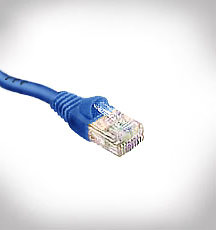
Patch cord cat 6
Category 6 cable, commonly referred to as Cat 6, is a cable standard for Gigabit Ethernet and other network physical layers that is backward compatible with the Category 5/5e and Category 3 cable standards. Compared with Cat 5 and Cat 5e, Cat 6 features more stringent specifications for crosstalk and system noise.[citation needed] The cable standard provides performance of up to 250 MHz and is suitable for 10BASE-T, 100BASE-TX (Fast Ethernet), 1000BASE-T/1000BASE-TX (Gigabit Ethernet) and 10GBASE-T (10-Gigabit Ethernet). Stock Category 6 patch cords are available in booted only and 7 colors. The cable has stranded conductors for greater flexibility. All patch cords are 100% tested for performance and continuity in accordance with industry standards. If you are looking for more choices in length, boot options, etc

Face plate with shutter CAT 6
A wide range of easy to assemble face plates and sockets are available including 25x50mm and LJ6 in angular, flat, and bevelled varieties.
Specifications :
- Great teamwork
- Competitive Price
- Good Quality
- Different Port
- Network faceplate;
- 1-port ,2-port,3-port,4-port.6port
- 86 x 86 mm
- Material: ABS.
- Application: networking
Network Product
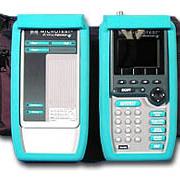
Pentascannig Machine
Specifications :
Hand-held certification and diagnostic tool for Category 5 and ISO Class C and D links Products also provide full software compliance with TIA TSB-67 requirements for measurement reporting and analysis(including TSB-67 NEXT sweep and swept Attenuation) Scanners in PentaScanner product family incorporate a graphical user interface Backlit display, menus, arrow keys, on-line help and descriptive menu options that guide Quickly and easily through certifying or troubleshooting cabling systems
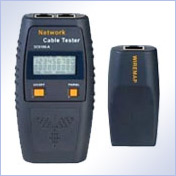
Digital Lan Tester
Major Functions and Features
Hand-held certification and diagnostic tool for Category 5 and ISO Class C and D links Products also provide full software compliance with TIA TSB-67 requirements for measurement reporting and analysis(including TSB-67 NEXT sweep and swept Attenuation) Scanners in PentaScanner product family incorporate a graphical user interface Backlit display, menus, arrow keys, on-line help and descriptive menu options that guide Quickly and easily through certifying or troubleshooting cabling systems
- It is capable to test unshielded pair and shielded pair (UTP, FTP) of RJ45 port; with special adapters. it is capable to test RJll port, telephone line (TEL) and coaxial cable (BNC).
- One person is enough to complete link continuity test.
- lt is capable to detect wiring troubles such as open circuit, short-circuit and dislocation.
- lt is simple and easy to use and the test result is clear at a glance with the aid of LCD display of wiring diagram.
- Voice report of test result makes test work convenient and interesting (only Model "A" unit).
- It is portable with long service battery (reserve for 50 hours).
- It is capable to locate cable with 8 far-end passive test ports (Identification Number IDl - ID8 are used for quick check of cable far-ends respectively).
- Single chip microprocessor software watchdog design is reliable in operation.
- Low battery voltage alarm display.

Lan Tester
Allows you to test for continuity, opens, shorts, and miswires all in one unit. Equipped with a remote module that allows testing from up to 1000ft away for long cable runs. Two test modes available (automatic and manual), so you can test and retest to ensure accurate results. LED indicators let you easily view results, even in poorly lit areas.
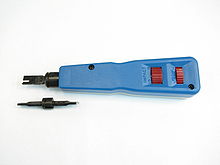
Impact and Punch Down tools
A punch down tool, also called a punchdown tool or a krone tool (named after the KRONE LSA-PLUS connector), is a small hand tool used by telecommunication and network technicians. It is used for inserting wire into insulation-displacement connectors on punch down blocks, patch panels, keystone modules, and surface mount boxes (also known as biscuit jacks).
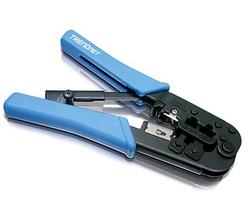
RJ 45 Crimping tools
Suitable for wire installation into network and telecommunication equipment. The head of tools which is made of special material makes tools more durable. Tool bit and spring made of excellent metal strip and spring steel. Plastic made from ABS or PC injection.
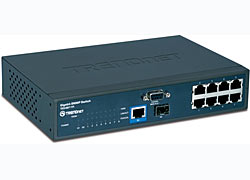
12/16/24/48 ports 10/100 Base Tx Web managed L2/3/4 switches.
- 8 x 10/100Mbps RJ-45 Fast Ethernet ports.
- 1 x 10/100/1000Mbps RJ-45 Gigabit port and 1 x 1000Base Mini-GBIC Gigabit port.
- Supports Layer 2 features such as Port Trunking, Load Balancing, SNMP, IGMP and VLAN.
- Robust 3.6Gbps switching capacity.
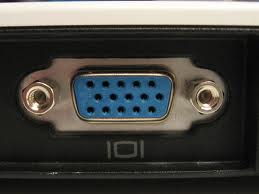
12/16/24/48 ports 10/100 Base Tx SNMP managed L2/3/4 switches
VGA connectors and cables carry analog component RGBHV (red, green, blue, horizontal sync, vertical sync) video signals, and VESA Display Data Channel (VESA DDC) data. In the original version of DE-15 pinout, one pin was keyed by plugging the female connector hole; this prevented non-VGA 15 pin cables from being plugged into a VGA socket. Four pins carried Monitor ID bits which were rarely used; VESA DDC redefined some of these pins and replaced the key pin with +5 V DC power supply.
.jpg)
12/16/24/48 ports 10/100 Base Tx with 2 gigabit ports L2/3/4 switches.
An RGB cable is used in transferring analog video signals from a video source to a display. In a typical home theater application, the RGB cable is referred to as component which uses different methods to transfer image information than other common RGB cable standard types. Common uses for the RGB cable include connecting DVD players, PC video cards and video cameras to a television, HDTV or computer monitor.
.jpg)
8/16/24 Ports 10/100 Base Tx.
Our VGA Cable is made with high-quality material and comes with our unconditional lifetime warranty. We also have VGA Adapters, a VGA Splitter and a VGA to DVI Upconvert. With our fast, free shipping, our great prices, and our outstanding customer service.
.jpg)
8/16/24 Ports 10/100/1000 Base Tx..
VGA connectors and cables carry analog component RGBHV (red, green, blue, horizontal sync, vertical sync) video signals, and VESA Display Data Channel (VESA DDC) data. In the original version of DE-15 pinout, one pin was keyed by plugging the female connector hole; this prevented non-VGA 15 pin cables from being plugged into a VGA socket. Four pins carried Monitor ID bits which were rarely used; VESA DDC redefined some of these pins and replaced the key pin with +5 V DC power supply.
Fiber Products

Fiber Media Converter.
A fiber media converter is a simple networking device that makes it possible to connect two dissimilar media types such as twisted pair with fiber optic cabling. They were introduced to the industry nearly two decades ago and are important in interconnecting fiber optic cabling-based systems with existing copper-based, structured cabling systems. They are also used in MAN access and data transport services to enterprise customers.
1. UTP to Fiber Media Converter Single Mode Dual Fiber( 20 km)
2. 10/100/1000 UTP to Fiber Media Converter Single Mode dual Fiber( 20 km)
3. UTP to Fiber Media Converter Single Mode Single Fiber( 20 km)
4. UTP to Fiber Media Converter SFP BAse( 20 km)
5. UTP to Fiber Media Converter Multi Mode Dual Fiber( 2 km)
6. 10/100/1000 UTP to Fiber Media Converter Multi Mode Dual Fiber( 2 km)
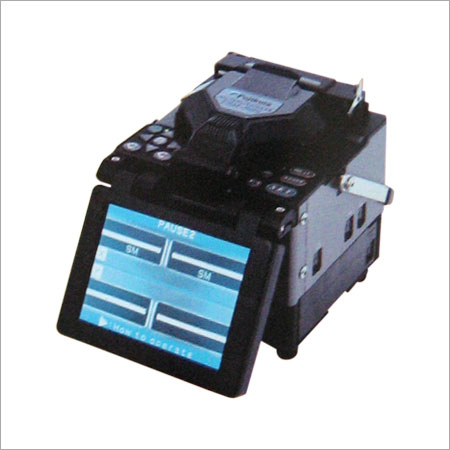
Fiber Splicing Machines
Introducing the world's fastest, smallest & the lightest, tsec approved fujikura's fiber splicing machine for ultimate performance and accuracy.
Features :
- Automatic fiber type identification for sm/ mm/ ds/ nzds.
- Real time and automatic arc calibration function for stable arc discharge with temperature and pressure compensation function.
- Fast splicing time 9 seconds (with smf) & fast tube heating time 35 sec.
- Three dimensional observation of fiber using core to core alignment (pas) on high resolution 5.6" color lcd monitor.
- Special power supply for 100 to 240 v ac/50 hz and same can be used with external car battery fro 10 to 15 v dc.
- Battery for splicing of 80 fibers with tube heating.
- Last 2000 splicing results storage, mechanical proof test of 2n and weight is 2.8 kg including ac/ dc adapter.
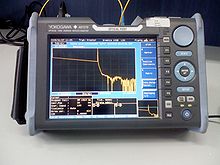
Optical OTDR(Optical Time Domain Reflectometer)
An optical time-domain reflectometer (OTDR) is an optoelectronic instrument used to characterize an optical fiber. An OTDR injects a series of optical pulses into the fiber under test. It also extracts, from the same end of the fiber, light that is scattered (Rayleigh backscatter) or reflected back from points along the fiber. (This is equivalent to the way that an electronic time-domain reflectometer measures reflections caused by changes in the impedance of the cable under test.) The strength of the return pulses is measured and integrated as a function of time, and is plotted as a function of fiber length
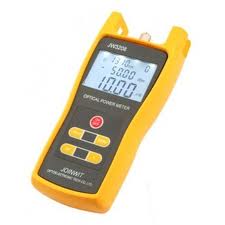
Optical power meter
An optical power meter (OPM) is a device used to measure the power in an optical signal. The term usually refers to a device for testing average power in fiber optic systems. Other general purpose light power measuring devices are usually called radiometers, photometers, laser power meters, light meters or lux meters.
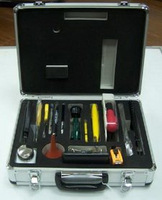
Optical toolkit
A high-quality fiber optic tool kit with all of the bare-essentials. Our custom collection of name-brand fiber optic tools gives you the fiber optic tools you need and leaves out the tools you might not.
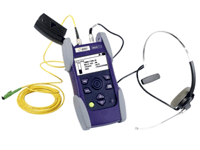
Optical fiber talk set
Provides clear digital voice transmission over a single fiber; hands free operation makes communication convenient for technicians using a headset or speaker phone mode.
Key Features
- More than 45 dB dynamic range, enabling communication across fibers of more than 200km long.
- Unique power supply management system with 4-way powering.
- Robust, shock-proof, and splash-proof design for field operation.

Optical Modems:-1E1 to Optical, 4/8E1 to Optical Multiplexer.
The VCL E1 (G.703) Fiber Optic Modem provides the user the capability to establish communication between two E1 interfaces or between an E1/FE1 interface and a "n"x64 V.35 interface over an optical fiber link. It establishes a secure, long range data fiber link between routers, multiplexers and other E1 devices. The primary application for the VCL-E1 (G.703) Fiber Optic Modem is to establish point-to-point fiber link at ranges longer than any copper modem can achieve. The clock options are Internal/External/Slave Clock - three clock mode option.
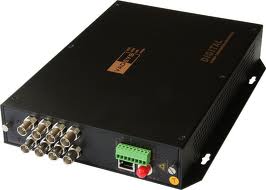
Fiber to Vedio Converter
The Video/Fiber converter is designed to convert base band video signals to multi-mode fiber optic. The Converter comes with Transmitter and Receiver and must be used in a pair. It can easily extend your video signal up to 2,500 meters. Linear modulation and wideband low-noise circuit design is to assure transmission quality to meet NTSC, PAL, SECAM and D2MAC specifications.
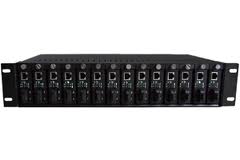
Fiber Media Converter Chassis
We have two types of rack-mounted chassis for unmanaged media converters : 2-U 14 slots media converter chassis and 2-U 16 slots media converter chassis. The 14 slots media converter chassis supports plug-and-play installation of stand-alone media converters convert modules and can hold a maximum of 14 media converters.

Fiber Patch Cords
Fiber optic patch cord is one of most commonly used components in fiber optic network. fiber optic patch cords sometimes is also called fiber optic jumper or fiber optic patch cables. generally there are two types of fiber optic patch cords: single mode fiber optic patch cords and multimode fiber optic patch cords. here the word mode means the transmitting mode of the fiber optic light in the fiber optic cable core. usually single mode fiber optic patch cord are with 9/125 fiber glass and is yellow jacket color, multi mode fiber optic patch cord are with 50/125 or 62.5/125 fiber glass and is orange color.
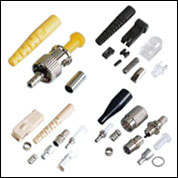
Fiber Connector
An optical fiber connector terminates the end of an optical fiber, and enables quicker connection and disconnection than splicing. The connectors mechanically couple and align the cores of fibers so light can pass. Better connectors lose very little light due to reflection or misalignment of the fibers.
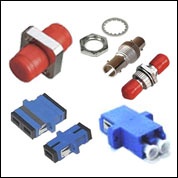
Fiber Coupler
A fiber optic coupler is a device used in optical fiber systems with one or more input fibers and one or several output fibers. Light entering an input fiber can appear at one or more outputs and its power distribution potentially depending on the wavelength and polarization. Such couplers can be fabricated in different ways, for example by thermally fusing fibers so that their cores get into intimate contact.
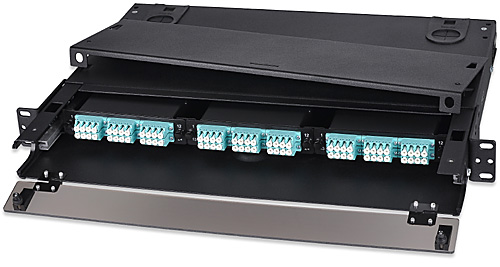
Fiber Enclosures
Fiber optic adaptors allow users to couple from one connector type to another type. These adaptors are comprised of a polymer body and inner assembly fitted with a precision alignment mechanism. These couplers are precision made and manufactured to demanding specifications. The combinations of a ceramic / Phosphor bronze alingment sleeves and a precision moulded polymer housing provides consistent long term mechanical and optical performance.
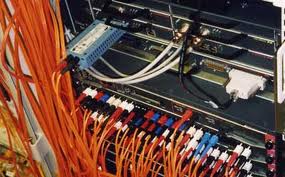
Fiber Patch Panel
Fiber optic patch panels are also known as fiber distribution panels. Patch panel's function is to terminate the fiber optic cable and provide access to the cable's individual fibers for cross connection. Fiber patch panel can use fiber patch cables to cross-connect, connect to fiber optic communication equipment or test the individual fibers in the fiber cable.
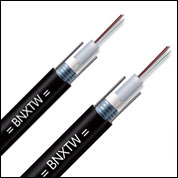
Fiber Outdoor Cable
Outdoor cables are available in a variety of fiber counts, constructions and jacket materials. These cables provide superior performance in outside plant applications such as ducts, conduit and aerial lashed. Corrugated steel armor can be applied for direct buried applications.
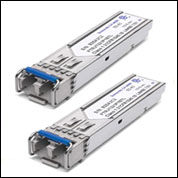
Small Form Factor Pluggables
The small form-factor pluggable (SFP) is a compact, hot-pluggable transceiver used for both telecommunication and data communications applications. The form factor and electrical interface are specified by a multi-source agreement (MSA). It interfaces a network device mother board (for a switch, router, media converter or similar device) to a fiber optic or copper networking cable. It is a popular industry format jointly developed and supported by many network component vendors.
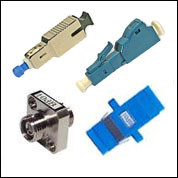
Fiber Attenuator
An optical attenuator is a device used to reduce the power level of an optical signal, either in free space or in an optical fiber. The basic types of optical attenuators are fixed, step-wise variable, and continuously variable. Attenuators are commonly used in fiber optic communications, either to test power level margins by temporarily adding a calibrated amount of signal loss, or installed permanently to properly match transmitter and receiver levels.
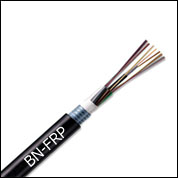
Fiber FRP Cable
The fiber FRP cable is for indoor applications in FTTH networks. Protective coatings are applied over the glass cladding to provide the necessary maximum fiber lifetime. Strength member and sheath are applied over the optical fibers.
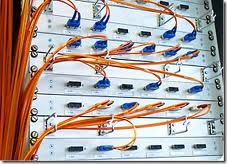
Fiber Management System (FMS)
A FMS (Fiber Management System) manages the fiber connections from outside of fiber rack to the fiber routers. Fiber cable duct containing many fibers come from far end sites and terminate on FMS using splicing technology. FMS has fiber in and fiber out ports. From fiber out port the fiber patch will go to fiber optics based router.

SFP Model
The small form-factor pluggable (SFP) is a compact, hot-pluggable optical module transceiver used for both telecommunication and data communications applications. The form factor and electrical interface are specified by a multi-source agreement (MSA) under the auspices of the Small Form Factor Committee. It is a popular industry format jointly developed and supported by many network component vendors.
Fiber Patch Cord OEM3
SFP ModelFiber Patch Cord OEM 4
Rack and Accessories
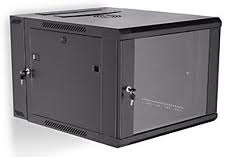
Wall Mount Rack
Mid-Atlantic's attractive, secure wall mount rack cabinet comes in a variety of heights and depth. This pivoting, sectional wall cabinet is ideal for larger systems in both secured and non-secured areas.
Features
- Reversible locking smoked plexiglass front door standard.
- Locking reversible center section.
- NEW Tool-Free Quick Mount pivot system enables one person mounting of the center section to the backpan on the jobsite.
- Permanently lubricated bushings with a proprietary pivot prevents sag.
- Front rail standard, rear rail set is an option. Both fully adjustable.
- Additional sets of rackrail can be easily added.
- Solid or vented doors can be substituted for plexi.
- Durable, attractive black powder coat finish.
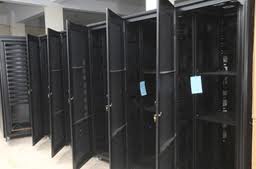
Floor Standing Racks
Floor Standing Racks have heavy duty robust structures and features which provide appropriate suitability for rack mounting servers and related components. The height of the racks is also standardized as multiples of 1.75 inches (4.445 cm) or one rack unit or "U"
Features
- Heavy-duty welded structure.
- Lockable and removable hinged doors in front and rear of the cabinet.
- Removable and lockable side covers.
- Adjustable (depth wise) equipment mounting rails.
- .Cable routing provision in top and bottom cabinet.
- Unique vented doors maximize airflow in the racks.
- Multi-baying capabilities.
- Simple Installation.
- Ability to integrate Fiber management elements.
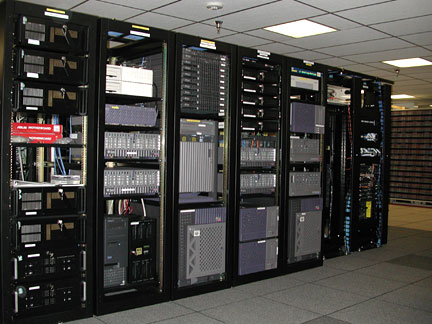
Server Rack
A rack server, also called a rack-mounted server, is a computer dedicated to use as a server and designed to be installed in a framework called a rack. The rack contains multiple mounting slots called bays, each designed to hold a hardware unit secured in place with screws. A rack server has a low-profile enclosure, in contrast to a tower server, which is built into an upright, standalone cabinet.
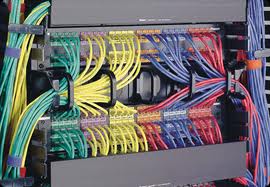
Cable Management Solution
The cable management system consists of a row of nine semicircular plastic bobbins mounted on the front of the router below the FPC card cage. The PIC cables pass between the bobbins and into the tray, keeping the cables organized and securely in place. The curvature of the bobbins also helps maintain the proper bend radius for optical PIC cables.
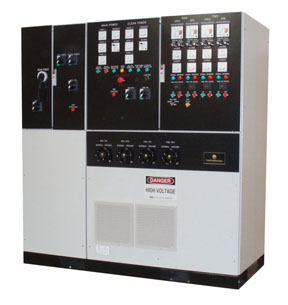
Power Distribution Unit (PDU)
A power distribution unit (PDU) is a device fitted with multiple outputs designed to distribute electric power, especially to racks of computers and networking equipment located within a data center. The term (PDU) may refer to two major classes of hardware power devices; the first and typically the general unqualified term refers to the category of relatively higher-cost floor-mounted power distribution devices which transform one or more larger capacity raw power feeds into any number of lower capacity distributed power feeds. These floor-mounted PDU devices are typically composed of transformers and circuit breakers and may optionally include monitoring controllers using protocols such as Modbus or SNMP. In a typical data center for example, there would be relatively few of these floor-mounted PDU devices, located along the walls or in central locations for larger spaces. Each floor-mounted PDU would feed a much larger number of racks and rows of racks.
Security Products
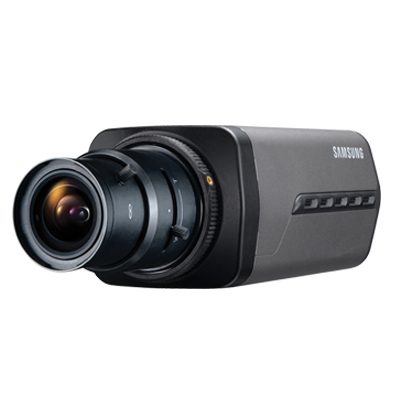
Box Camera
The Box camera HD-SDI megapixel digital camera, using HD-SDI technology this camera transfers HD Megapixel images without signal interruption or video delay; it is ideal for use in high-security surveillance applications for example; casinos, banking and hotels. The SCB-6000 can transfer full HD (1920 x 1080) resolution videos max. 100m distance at 30fps real-time. In addition, there is built-in true day&night, SSDR and SSNRIII.

Bullet Camera
This camera features True Day/Night with ICR (IR-Cut Filter Removable, WDR (Wide Dynamic Range) for backlight problems caused by different lighting conditions, and SSNRIII (2D+3D Samsung Super Noise Reduction) to eliminate image noise in low light. The SCO-3080R is also equipped with remote control access via RS-485 or coaxial cable.
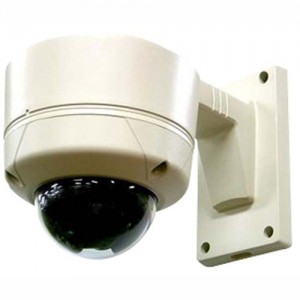
Dome Camera
A dome camera is a popular style of security camera used in stores, homes and businesses. This type of camera is available in many varieties for both indoor and outdoor use. Dome security camera systems are generally a dark gray to black color, and are used to record actions of customers or intruders.
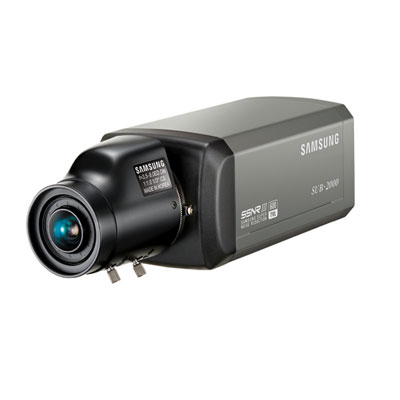
UTP Camera
The UTP signal can be used with multi-camera UTP power supply for single cable installations, but it also is compatible with NVT and Nitek products. With UTP, cameras can be located up to 3000 feet away without fear of ground loops, and the signal is transmitted via CAT-5 cable. This camera is equipped with electronic day & night capability, digital image stabilization and multiple voltage inputs.
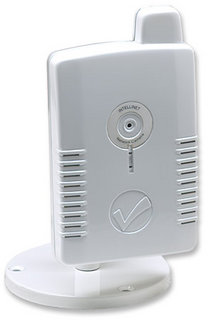
Network IP Camera
An Internet protocol camera, or IP camera, is a type of digital video camera commonly employed for surveillance, and which unlike analog closed circuit television (CCTV) cameras can send and receive data via a computer network and the Internet. Although most cameras that do this are webcams, the term "IP camera" or "netcam" is usually applied only to those used for surveillance.
There are two kinds of IP cameras:
1.Centralized IP cameras, which require a central Network Video Recorder (NVR) to handle the recording, video and alarm management.
2.Decentralized IP cameras, which do not require a central Network Video Recorder (NVR), as the cameras have recording functionality built-in and can thus record directly to digital storage media, such as flash drives, hard disk drives or network attached storage.
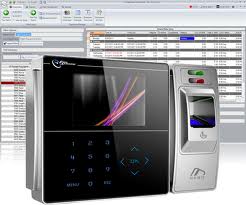
Touch and face detection
Key Benefits of Time & Attendance
Time & Attendance delivers various key benefits to organizational and employee development and productivity.
- Cut down on administrative time.
- Eliminate human error in employee time office records to save monetarily.
- Significantly Increase Employee & Manager Satisfaction.
- Monitor & analyze absence to reduce impact on productivity.
- Improve Organizational efficiency and growth with employee performance.
- Accurate processing and reconciliation of time clock software data with ease.
- Access Time Records via intranet or Internet using web browser.
- Graphical representation of events, schedules and time calculations.
- Interfaced with PayCare or existing Payroll software.
- Contract Time: Casual and contract workers.
- Fixed Time: Environments with shift work and night work.
- Flexi Time: Office-type environment.
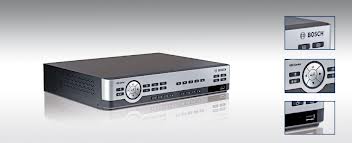
Digital Video Recorder (DVR)
A digital video recorder is suitable for both local and remote surveillance and constitutes a suitable security system for every enterprise. It can record video with total record speed of 50 frames/sec (4 cameras simultaneously) and in addition it supports 100 frames/second playback. The crypto vrs300 supports triplex operation, which means that, the 3 basic functions of the dvr: Live surveillance, recording and playback can be used simultaneously. For fast and easy backup, a removable hdd rack is featured, thus ensuring increased security and ease of use. The dvr is especially designed to facilitate remote operation and management. This means that using the software application, all basic features can be done either through a pc, local network (lan) or internet. Moreover, the vrs300 supports the ability to record and store videos on the hdd of the remote pc. The recorder has the ability to record up to 1 audio channel. For more convenience, speakers can be connected directly to the recorder.
Burglar alarm
burglar alarm is a system designed to detect intrusion – unauthorized entry – into a building or area. They are also called security alarms, security systems, alarm systems, intrusion detection systems, perimeter detection systems, and similar terms. Burglar alarms are used in residential, commercial, industrial, and military properties for protection against burglary (theft) or property damage, as well as personal protection against intruders. Car alarms likewise protect vehicles and their contents. Prisons also use security systems for control of inmates.
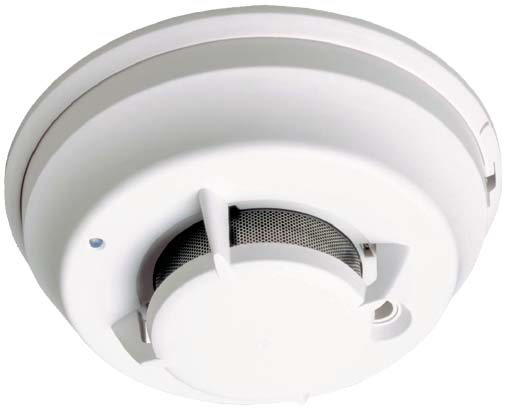
Smoke detectors
A smoke detector is a device that detects smoke, typically as an indicator of fire. Commercial, industrial, and mass residential devices issue a signal to a fire alarm system, while household detectors, known as smoke alarms, generally issue a local audible or visual alarm from the detector itself.
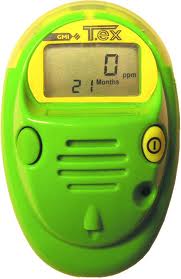
Gas detectors
A gas detector is a device which detects the presence of various gases within an area, usually as part of a safety system. This type of equipment is used to detect a gas leak and interface with a control system so a process can be automatically shut down. A gas detector can also sound an alarm to operators in the area where the leak is occurring, giving them the opportunity to leave the area. This type of device is important because there are many gases that can be harmful to organic life, such as humans or animals.
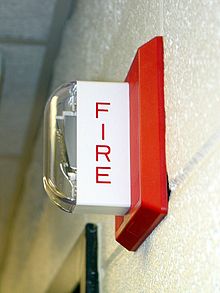
Fire Alarm
An automatic fire alarm system is designed to detect the unwanted presence of fire by monitoring environmental changes associated with combustion. In general, a fire alarm system is classified as either automatically actuated, manually actuated, or both. Automatic fire alarm systems are intended to notify the building occupants to evacuate in the event of a fire or other emergency, report the event to an off-premises location in order to summon emergency services, and to prepare the structure and associated systems to control the spread of fire and smoke.
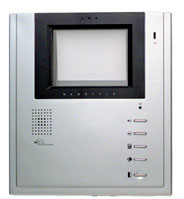
Video Door Phone
There is now no longer the need to compromise the safety and security of your home and family with an Intelligent Home Video Door Phone system designed to give you full communication capability with those at your front door. Intelligent Home Video Door Phones are a high quality, expandable system that features a door bell and a camera unit with a built-in microphone and an easy to use internal video phone unit, with a colour video image monitor, so you can view and converse with anyone at the door without having to be seen.
